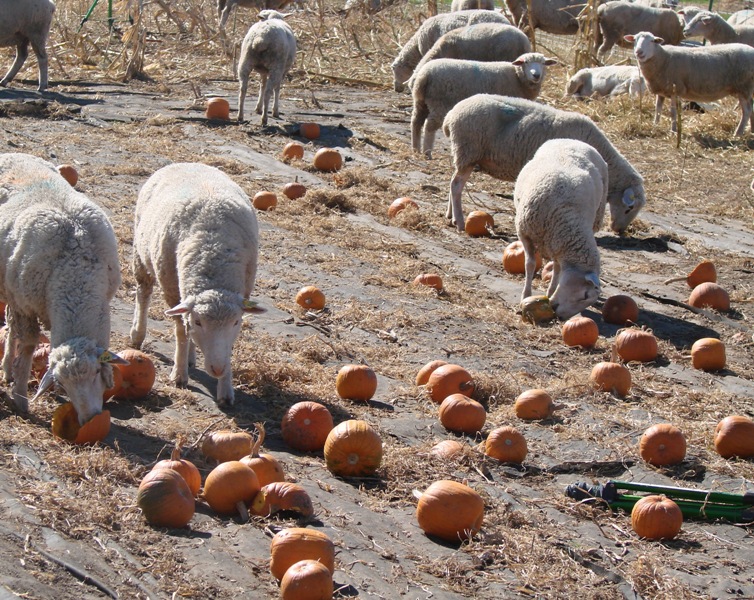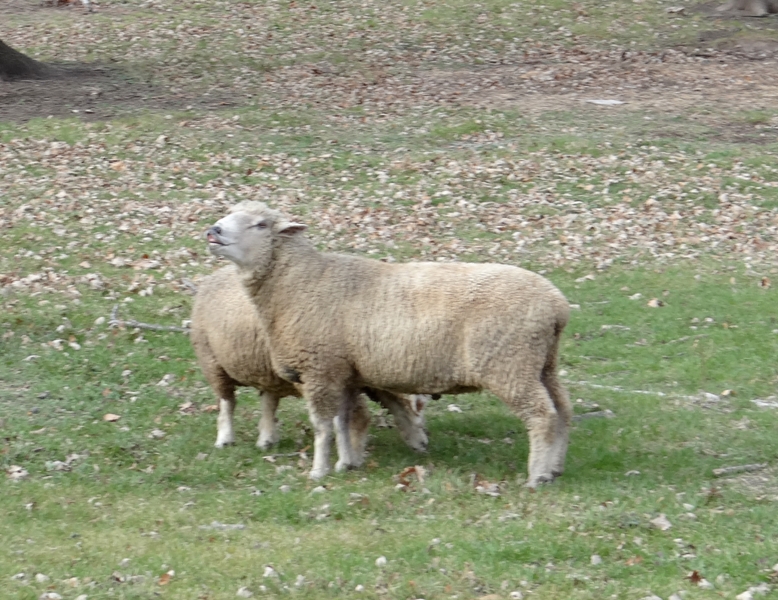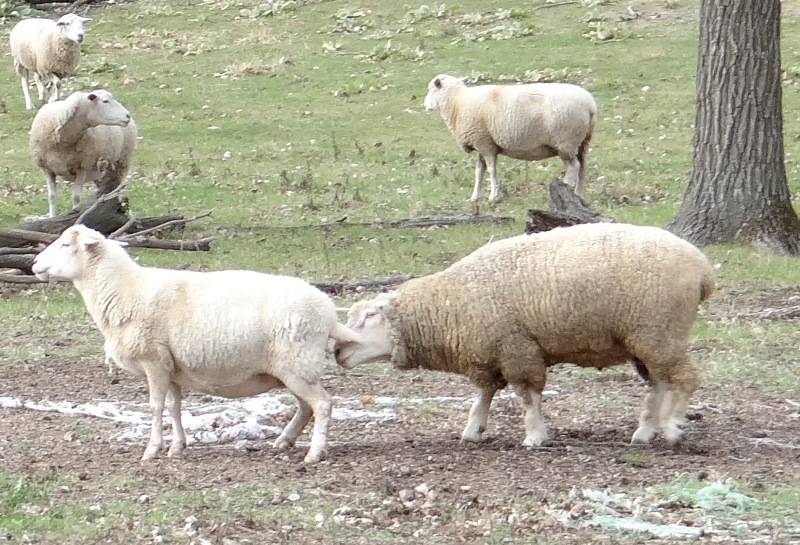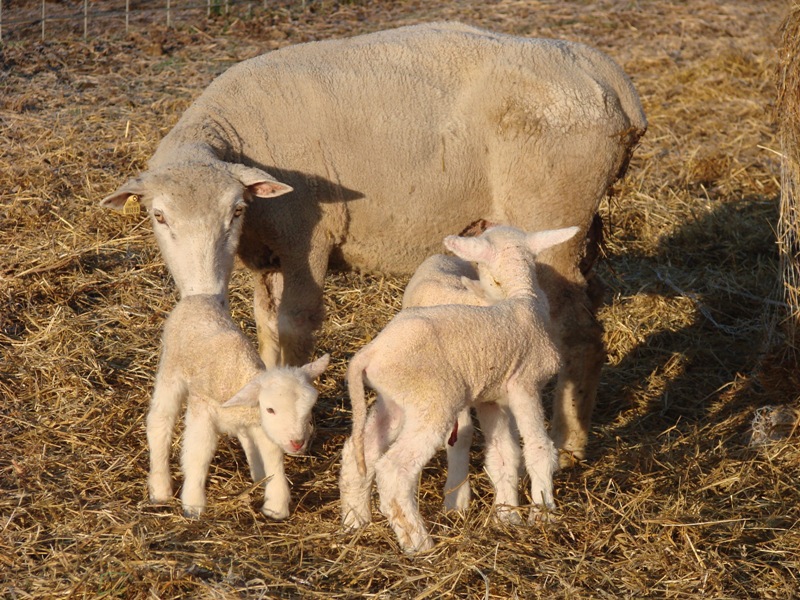Pumpkin Time is Breeding Time in the Upper Midwest
Fall is Breeding Time: Delicious pie pumpkins are fun to eat but also highly nutritious and prepare ewes for breeding. Ewes that are provided higher nutrition before breeding are more likely to conceive and successfully carry multiple lambs. Extra pumpkins are easy to find after Halloween and the ewes love this addition to their diet.
As the days become shorter and cooler in the fall the ewe’s brain releases hormones that turn on her reproduction system. This allows for lambs to be born in the spring when the grass is especially tender and nutritious and the ewe’s milk supply peaks. Some sheep breeds, such as those developed near the equator, are less likely to be seasonal breeders and may breed successfully throughout the year. Our ewes may also breed out-of-season but with lower conception rates and our long winters makes this difficult to manage.

When the ewes come into heat (estrus) they become very interested in the ram. Some ewes will choose a particular ram and not allow others to breed her. Most are not so fussy and may be bred by more than one ram during this period and carry lambs from different fathers. Only during the 24-36 hrs that the ewe is in heat will she will allow the rams to mate her. The classic behavior is for her to lift and fan her tail sending her scent into the air. Any mature ram in the area will respond with interest. He will lift his nose high and curl his upper lip (the Flehmen response) to locate the scent.

An adult ram can mate over 100 ewes throughout the season. It is more common to limit a ram to 30-50 ewes to prevent exhaustion. This is still enough to keep even the most gallant ram busy as he mates each ewe a number of times during her estrus. After the ewe is successfully bred she will not be interested in the ram until next year.

Five months from breeding she will have her lambs. Good nutrition during these months is important to ensure her body reserves will support the high nutrition needs of lactation. This is especially important if the ewe is carrying multiple lambs. If nutrition is too low during gestation the ewe’s milk supply will be limited. Providing additional nutrition after birth helps a little but will not allow her to provide the quantity of milk to match her genetic potential.

The ewe’s ability to properly mother may also suffer. It is as if she knows she does not have enough milk to successfully raise her lambs. It is our opinion, based on experience, that pumpkins in the fall helps ensure healthy pregnancies and a high lambing percentage in the spring. Plus they do so enjoy eating pumpkins. They are a delight to watch.
